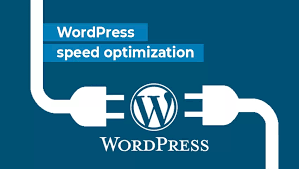
Website speed is crucial for user experience, SEO, and conversion rates. A slow-loading website can lead to high bounce rates, poor user engagement, and a negative impact on search engine rankings. In this comprehensive guide, we will cover proven techniques and best practices to increase your website speed for both mobile and desktop users. We’ll discuss front-end optimization, back-end optimizations, caching, image optimization, and much more, providing actionable code examples to improve performance.
What You'll Learn:
Understanding Website Performance
Website speed is measured by load time (how fast the page appears), time to first byte (TTFB), and largest contentful paint (LCP).
The goal is to make your site load quickly for users on both desktop and mobile devices. Mobile users often face slow networks, so optimizing for mobile is even more crucial.
Optimization Techniques with Code:
1. Optimizing Images:
Images often account for a large portion of a page's size. Using optimized images reduces loading time significantly. You can achieve this with the following strategies:
a. Compress Images: Use tools like ImageOptim, TinyPNG, or ShortPixel to compress images before uploading them to your site.
b. Implement Lazy Loading for Images: Lazy loading ensures that images only load when they are about to be displayed in the viewport (visible area of the browser).
<img src="image.jpg" alt="Description" loading="lazy" />
This loading="lazy" attribute enables lazy loading, improving mobile and desktop load times.
2. Minify CSS, JavaScript, and HTML Files:
Large CSS, JavaScript, and HTML files slow down page loading. Minifying these files by removing unnecessary characters (spaces, comments) reduces their size and speeds up your site.
Example (minify CSS using CSSNano in Node.js):
const cssnano = require('cssnano');
const fs = require('fs');
const css = fs.readFileSync('styles.css', 'utf8');
cssnano.process(css).then(result => {
fs.writeFileSync('styles.min.css', result.css);
});
You can also use plugins for WordPress, like Autoptimize, to automatically minify your code.
3. Enable Browser Caching:
Caching allows the browser to store assets locally so users don’t have to download them every time they visit your site.
Example (Apache .htaccess for caching):
<IfModule mod_expires.c>
ExpiresActive On
ExpiresDefault "access plus 1 year"
ExpiresByType image/jpg "access plus 1 year"
ExpiresByType image/jpeg "access plus 1 year"
ExpiresByType image/png "access plus 1 year"
ExpiresByType text/css "access plus 1 month"
ExpiresByType application/javascript "access plus 1 month"
</IfModule>
4. Optimize CSS Delivery:
To speed up your website’s rendering, you can inline critical CSS directly into the HTML for above-the-fold content, so it loads immediately.
Example (Critical CSS inlining):
<style>
/* Critical CSS */
body { font-family: Arial, sans-serif; }
.header { background-color: #333; }
</style>
Tools like Critical or PurgeCSS can help automate this process.
5. Use Content Delivery Networks (CDN):
A CDN distributes your content across multiple global servers, ensuring users get content from a server closer to them, thus speeding up the load time.
Example (Integrating Cloudflare CDN with WordPress):
Sign up for Cloudflare and configure the DNS settings to point to Cloudflare’s servers.
Install the Cloudflare plugin in WordPress and configure it to serve content from Cloudflare’s CDN.
This reduces latency and accelerates content delivery for both mobile and desktop users.
6. Defer Parsing of JavaScript:
By deferring non-essential JavaScript files (scripts that are not critical for rendering the page), you can prevent them from blocking page load.
7. Reduce HTTP Requests:
Each file (CSS, JS, images) requires an HTTP request. Reducing the number of HTTP requests can significantly speed up your website.
Combine CSS and JavaScript files where possible.
Use SVGs for icons instead of multiple image files.
Example (Combining CSS files)
<link rel="stylesheet" href="styles.min.css">
8. Use Server-Side Caching and Database Optimization:
If your website is database-heavy (e.g., WordPress), use caching mechanisms and optimize your database to improve performance.
Caching Plugins for WordPress: Use W3 Total Cache or WP Super Cache for server-side caching.
Optimize Database: Regularly clean up unused data, revisions, and spam comments. You can use plugins like WP-Optimize.
Example (Database cleanup using WordPress CLI)
wp post delete $(wp post list --post_type=revision --format=ids)
wp comment delete $(wp comment list --status=spam --format=ids)
9. Enable GZIP Compression:
GZIP compression reduces the size of HTML, CSS, and JavaScript files before sending them to the browser.
Example (Enable GZIP in Apache .htaccess):
<IfModule mod_deflate.c>
AddOutputFilterByType DEFLATE text/html text/plain text/xml text/css application/javascript
</IfModule>
10. Mobile-Specific Optimizations:
Mobile users typically have slower network speeds, so mobile optimizations are even more critical.
Responsive Images: Use the
srcsetattribute to serve appropriately-sized images based on the device’s screen size and resolution
<img src="image.jpg" srcset="image-320w.jpg 320w, image-480w.jpg 480w, image-800w.jpg 800w" alt="Responsive Image">
AMP (Accelerated Mobile Pages): If your website has heavy content and you need to improve loading speed, consider using AMP to optimize mobile performance.
Example (AMP HTML)
<html amp>
<head>
<script async src="https://cdn.ampproject.org/v0.js"></script>
<link rel="stylesheet" href="styles.css">
</head>
<body>
<amp-img src="image.jpg" width="300" height="200" alt="Image"></amp-img>
</body>
</html>
Conclusion:
By implementing the techniques above, you can significantly improve your website’s speed on both mobile and desktop devices. Focus on image optimization, minifying files, caching, CDN usage, and code optimizations to ensure a fast, smooth user experience. With faster loading times, you’ll see improvements in SEO rankings, user engagement, and conversion rates.


